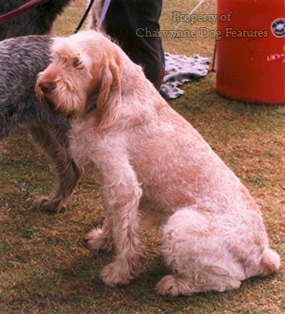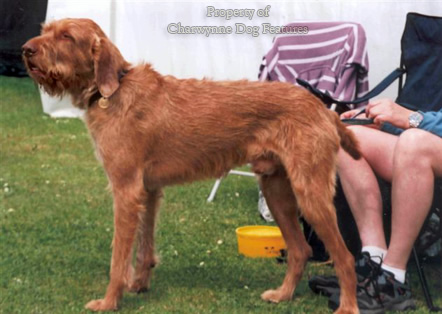710 POINTING GRIFFONS
THE POINTING GRIFFONS – PURPOSE AHEAD OF PRETTINESS
by David Hancock
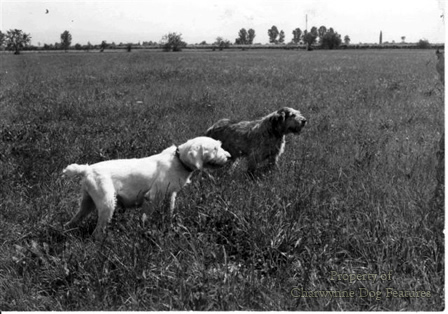 To many, the griffon is a composite mythological creature, the fabulous beast of heraldry and architectural decoration, the oldest and most common of outlandish monsters. But to gundog men, the griffon is an old and much respected continental pointing dog of infinite variety, a composite sporting creation. Varieties of the canine griffon are found from Italy in the west to Hungary in the east, and within central Europe too. All were developed in pursuit of function by knowledgeable hunters, not for cosmetic appeal but much more hard-headedly to the level of field excellence demanded by their owners. Some authorities, not all Italian, claim that the coarse-haired pointing griffon of Italy, the Spinone, not the prettiest gundog breed, is the oldest form of this type of dog. Certainly the Spinone type was known throughout the Piedmont, in Venetia, Istria, Dalmatia and as far as the Danube, leading some to suppose that the type came from further east.
To many, the griffon is a composite mythological creature, the fabulous beast of heraldry and architectural decoration, the oldest and most common of outlandish monsters. But to gundog men, the griffon is an old and much respected continental pointing dog of infinite variety, a composite sporting creation. Varieties of the canine griffon are found from Italy in the west to Hungary in the east, and within central Europe too. All were developed in pursuit of function by knowledgeable hunters, not for cosmetic appeal but much more hard-headedly to the level of field excellence demanded by their owners. Some authorities, not all Italian, claim that the coarse-haired pointing griffon of Italy, the Spinone, not the prettiest gundog breed, is the oldest form of this type of dog. Certainly the Spinone type was known throughout the Piedmont, in Venetia, Istria, Dalmatia and as far as the Danube, leading some to suppose that the type came from further east.
The researches of Tale tell us well over a century ago, roan-coloured Spinoni were well known in Lombardy and Venetia, usually with longer and noticeably silkier, al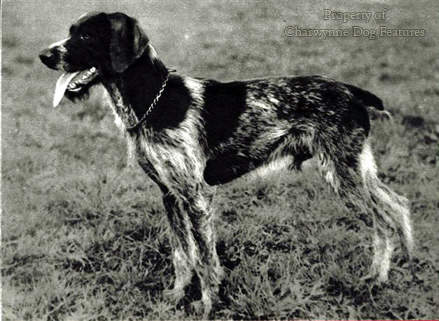 most setter-like hair. The researches of Tschudy suggested that all pointing breeds originated in the Roman Empire, when Greek traders and others from the western Adriatic coast brought coarse-haired quail-dogs to be developed consequently by sporting fanciers in what became southern Italy. What ever its origins, the Spinone has distinct similarities with the Czech coarse-haired griffon, the Cesky Fousek, the Stichelhaar and the Drahthaar or wire-haired German pointer and the Slovakian dog. The Hungarian rough-haired variety of Vizsla may have a separate origin in hunting dogs from western Turkey.
most setter-like hair. The researches of Tschudy suggested that all pointing breeds originated in the Roman Empire, when Greek traders and others from the western Adriatic coast brought coarse-haired quail-dogs to be developed consequently by sporting fanciers in what became southern Italy. What ever its origins, the Spinone has distinct similarities with the Czech coarse-haired griffon, the Cesky Fousek, the Stichelhaar and the Drahthaar or wire-haired German pointer and the Slovakian dog. The Hungarian rough-haired variety of Vizsla may have a separate origin in hunting dogs from western Turkey.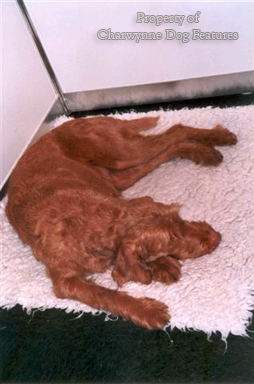
When working in Germany, near the Dutch border, half a century ago, I was very impressed by the Korthals griffon, developed from a blend of Barbet, French hunting griffon and other hound blood. The skill of Korthals who although Dutch-born, lived in Germany in the household of the Prince of Solms in the late 1800s, was the successful use of hound blood, a cause of temperament problems and unwanted scenting traits in other hound crosses in pointer-hound blends. Encouraged by the visionary Baron von Gingins, who founded the German kennel club, Korthals began in the early 1870s with seven well-chosen coarse-haired dogs from Germany, France and Holland. He eventually produced a number of outstanding dogs, strong physically and mentally yet still biddable, keen-eyed and resolute, hardy and waterproof-coated, with great stamina and impressive hunting skills. Soon to become known as the pointing griffon, their blood has been used to enhance the performance of sister-breeds, including the Drahthaar.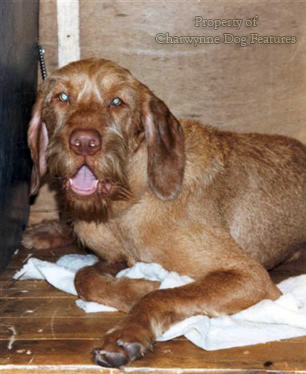
As a working gundog, the Korthals Griffon has gained a considerable reputation as a game-finder and is ideally suited to finding woodcock in winter and partridge in spring. The breed has a distinctive running style, with a half-rolling gallop and a head held ‘hammer style’, instinctively prefering to work just over 50 metres to either flank and around 30 metres ahead of its handler. Smaller than the GWHP and the Spinone, the Korthals Griffon has a jacket slightly longer than its German cousin and of a different texture from the Spinone. The Korthals Griffon has a distinctive beard and eyebrows, and, unlike the Spinone, a level topline. It is favoured in steel-grey, with parti-coloured brown and white or orange-red and white also featuring; the coat texture is harsh and rough, like fine wire to the touch, never frizzy, curly or woolly, but with softer thicker undercoat beneath, providing the waterproofing its creator desired in a wildfowlers’ dog.
Another griffon variety is named after its creator, the Boulet griffon, developed using even more of the Barbet, in France. Emmanuel Boulet, a northern French industrialist, was advised by the great sporting authority of that time, Leon Vernier, and after ten years of experimental crosses, produced two particularly talented gundogs, Marco and Myra, behind every soft-coated griffon of that name. This soft-coat comes from the waterdog blood of the Barbet, possibly the original waterdog of Europe. Boulet sought the ‘dead-leaf’ colour in the coat of his breed, to blend with the vegetation of his favourite shooting ground, the forests of Londe. Another griffon pointer with waterdog blood is the Pudel-pointer of Germany, created initially from a mating between a forester’s black Poodle and Kaiser Wilhelm II’s best English Pointer, Tell. The desired blend was one quarter Poodle to three quarters pointer, but in time Drahthaar blood was introduced to produce a more determined hunter.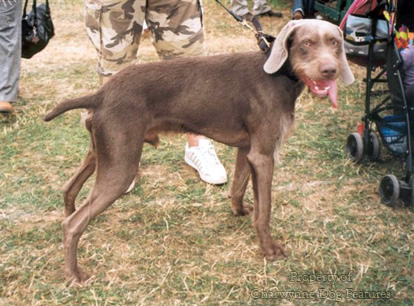
The Slovakian rough-haired Pointer has only existed since 1950, created from a blend of the Bohemian roughbeard, now known as the Cesky Fousek, the GWHP and the Weimaraner (as its coat colour betrays) but is steadily gaining ground in the UK. Some 300 have now been registered here, mainly owned by the working gundog fraternity. I have seen about a dozen of these and noticed the wide variation of coat texture between them. Commendably, these early British owners have made good use of their dogs, gaining field trial awards and success in spring pointing tests, agility and obedience tests. The Ansona and Stormdancer kennels have so far led the way. 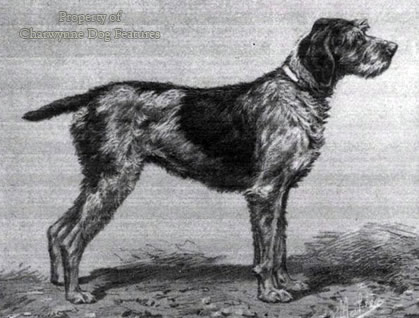
Continental breeders have never hesitated to cross-breed or out-cross in the dedicated pursuit of excellence in the field. The great sporting dog fancier, Alban de Lamothe, once advised: “The breeding of the wire-haired pointer and its enormous success in the field should be a lesson to those who regard the secondary and conventional characteristics as immutable dogma. They are in danger of forgetting that our hunting dogs belong to working breeds, not the category of domestic pets.” All sportsmen who breed their own dogs should have this quote pasted over their kennels.
The French hound breeds with griffon in their name have a reputation for being ‘excessivement meurtier’ and, whilst not being ‘murderous’, the pointing griffon breeds display much more ‘edge’ than many of our native gundog breeds, some of which are almost too soft-natured for a hunting dog, where utter determination has its merits. The mythical griffon was depicted as having the hind parts of a lion and the head, shoulders, wings and forelegs of an eagle. The canine griffon merely combines the heart of a lion with the more symmetrical, if rather conventional, build of a really good all-round gundog.
